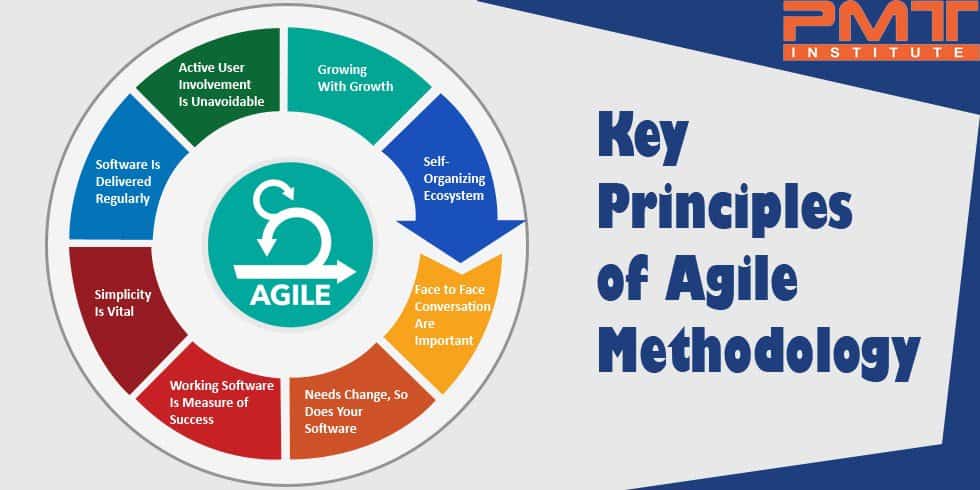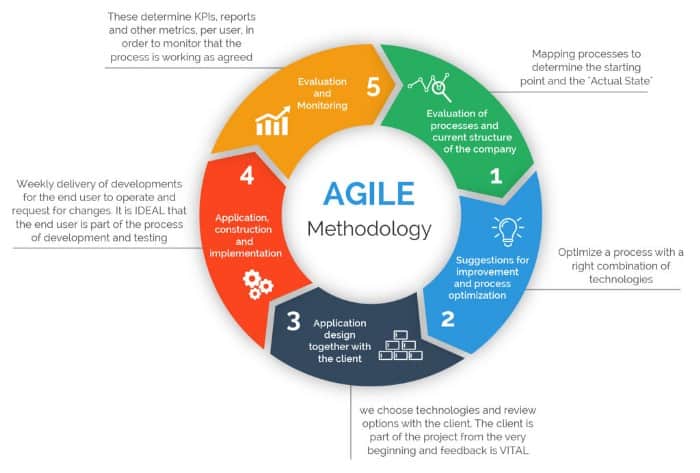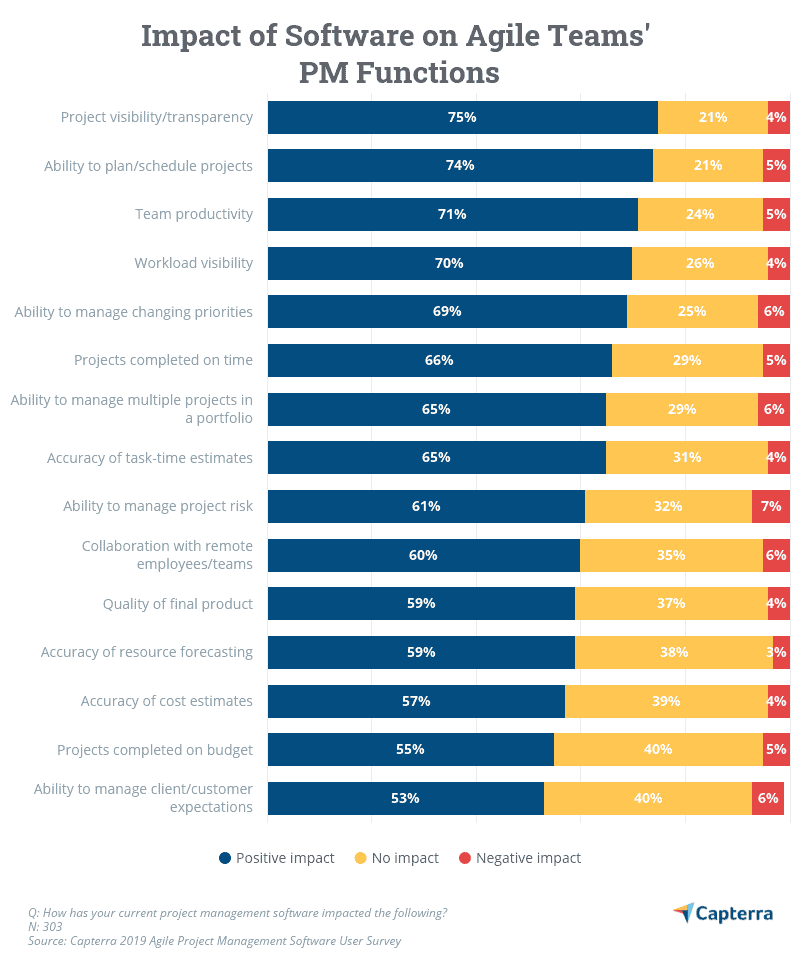12 Agile Project Management Principles: A Comprehensive Guide
Published:
Updated:

Agile project management is an iterative and incremental approach to managing projects. It is characterized by short development cycles, known as sprints, and a strong emphasis on collaboration between the project manager and the team. The agile project management principles were first outlined in the Manifesto for Agile Software Development, which was published in 2001. Since then, agile has become one of the most popular approaches to managing software development projects.
This approach may sound very complicated and confusing to someone outside the tech world. This is why I'm here today - to break down exactly what the agile project management principles are and how they maximize project success so you can get your online PMP certification!

(Source: Medium)
Firstly we need to take a look at the Agile Manifesto. In 2001, a group of software experts with project management training came together to write the Manifesto.
The backbone of this project lies in the 12 agile project management principles:
- Our highest priority is to satisfy the customer through early and continuous delivery of valuable software.
- Welcome changing requirements, even late in development. Agile processes harness change for the customer's competitive advantage.
- Deliver working software frequently, from a couple of weeks to a couple of months, with a shorter timescale preference.
- Business people and developers must work together daily throughout the project.
- Build projects around motivated individuals. Give them the environment and support they need, and trust them to get the job done.
- The most efficient and effective method of conveying information to and within a development team is face-to-face conversation.
- Working software is the primary measure of progress.
- Agile processes promote sustainable development. The sponsors, developers, and users should be able to maintain a constant pace indefinitely.
- Continuous attention to technical excellence and good design enhances agility.
- Simplicity - the art of maximizing the amount of work not done - is essential.
- The best architectures, requirements, and designs emerge from self-organizing teams.
- At regular intervals, the team reflects on becoming more effective, then tunes and adjusts its behavior accordingly.
Implementing the Agile Project Management Principles
Once you understand the 12 principles of agile project management stated above, you should start applying them to your ongoing or future projects. To maximize your success there are 4 steps you need to take when implementing the agile principles of project management:
Step 1: Strategize
Having a solid strategy and knowing your path to success is necessary. Only once you have a complete idea of where you're going and how you'll get there can you determine the next step. Ask yourself some crucial questions:
- What need is your project meeting?
- What kind of outcome do you hope to achieve?
- Which team members are best suited to take your agile approach to successful completion?
These are fundamental questions that help you plan a detailed strategy that leads to project success.
Step 2: Create Your Mind Map
After answering these questions, you need to start mapping out your approach. Your strategy determines your start and end points - it cannot show you the path in-between. You need to map that out for yourself. But don't worry, you do not need to have every step figured out—just a simple timeline with approximate milestones and projected figures.

(Source: Venngage)
This is very important since it solidifies your project while determining your project scope. As your PMP certification training teaches you, this is also where you keep agile principles in mind most. Ensure that you remain goal-oriented. By keeping the timeline loose, you also give yourself room for error and future development and advancement (see principle 2).
All this said I recommend only having a few goals per project. Having more than 5 goals and trying to achieve them all during a single project is nearly impossible. As principle #9 says: "Continuous attention to technical excellence and good design enhances agility." Focus on this rather than trying to achieve too much at one go. Having fewer goals also lets you tentatively determine completion dates so you can begin approaching stakeholders and building marketing and sales teams. Once you get these parties emotionally invested in your progress, completing the project becomes much more manageable and reminds you why you started in the first place (see principle 5). Creating manageable projects also brings you closer to your project management institute certification.
Step 3: Begin the Work
With your strategy and timeline intact, you now begin the actual work. Working on projects in spurts of productivity instead of continuously (an approach that could prove tedious) is a staple of agile project management (see principle 8) and advised during your project management training. Additionally, here, you can also identify areas where you can maximize the simplicity the 10th principle advocates. By working in sprints, identifying problem areas where the team works with less cohesion is also possible.
Bringing together principles 11 and 12 helps improve productivity and solve team frictions through reflective exercises. A large part of your online PMP certification, having regular team meetings (such as daily standups) early in the project also helps everyone understand their role better. They know what they need to do to ensure project success. This also makes future reflective exercises easier since the sources of friction will be easier to identify.
This is why having regular team meetings is very important. It also keeps the team invested, the importance of which principle 6 exemplifies. Face-to-face conversations are crucial for smooth project execution.
Step 4: Define the Future
With regular check-ins such as sprint reviews and retrospectives and a clear path to success, you should have achieved at least one of your goals, bringing you closer to PMP certification. Once you complete one or more of your goals, check your timeline and see whether you're on track. If not, you need to determine what caused the planning to be inadequate. This is why principles 3, 4, and 7 exist. Together, they tell you that having working software that you can continuously change is very important.
So then what's next?
Once you have this goal completed and your project is well on its way to completion, you need to examine it and decide how to go ahead. Whether you are thinking of future projects or the future of this project, you can plan better. This gives both you and your teams a better idea of what the future holds for them. Therefore, they are much more likely to follow you and accept your leadership in the future.
Taking a step back this way also opens you up to possible external advancements that could help you achieve your goals with less work. This way, you can indeed adopt the agile project management principles and perfect them for maximum project success in the future, ensuring you complete your project management training along the way!

